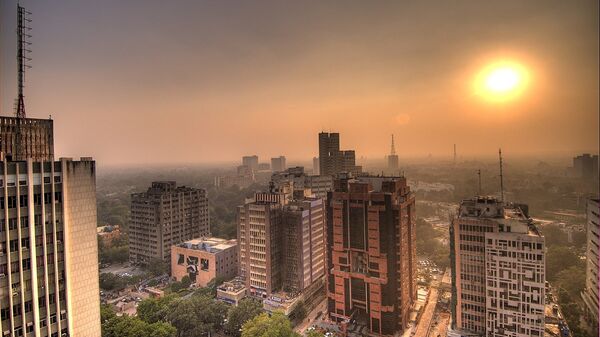New Delhi (Sputnik) — A UN Report on urbanization has projected that India's capital Delhi will become the world's most populous city in ten years' time. While the UN body report claims that the change in demographic concentration will help the government provide better civic services, a social scientist attributes the phenomenon to the concentration of infrastructure and an employment-suitable ecosystem in urban areas, with a gross neglect of rural areas.
READ MORE: China to Become World's First Economy by 2032 if Global Trends Continue
"The government has failed to maintain parity of civic amenities in rural areas in comparison to the urban centers. The neglect of this is resulting in the abandonment of villages and the people taking refuge in cities. Another strong reason is lack of employment in areas outside the city limits," Arvind Murti, social scientist and civil rights activist told Sputnik.
The report further adds that at the same time, India will surpass the Chinese population to become the world's most populated country as well.
"When urban areas growth is rapid, ensuring access to housing, water, sanitation, electricity, public transport, education and healthcare for all is especially challenging. Managing urban growth to ensure that it is sustainable has become one of the most important development challenges of the current century," John Wilmoth, director of the Population Division of UN DESA said during a press conference.
READ MORE: India May Be Staring at a Potential Mental Health Crisis
Going by the prediction, two-thirds of people in the world will be living in cities by 2050, and the boom will be concentrated in three countries: India, China and Nigeria. Currently, there are 33 megacities around the world and by 2030, 43 megacities are projected, mostly in developing countries.



